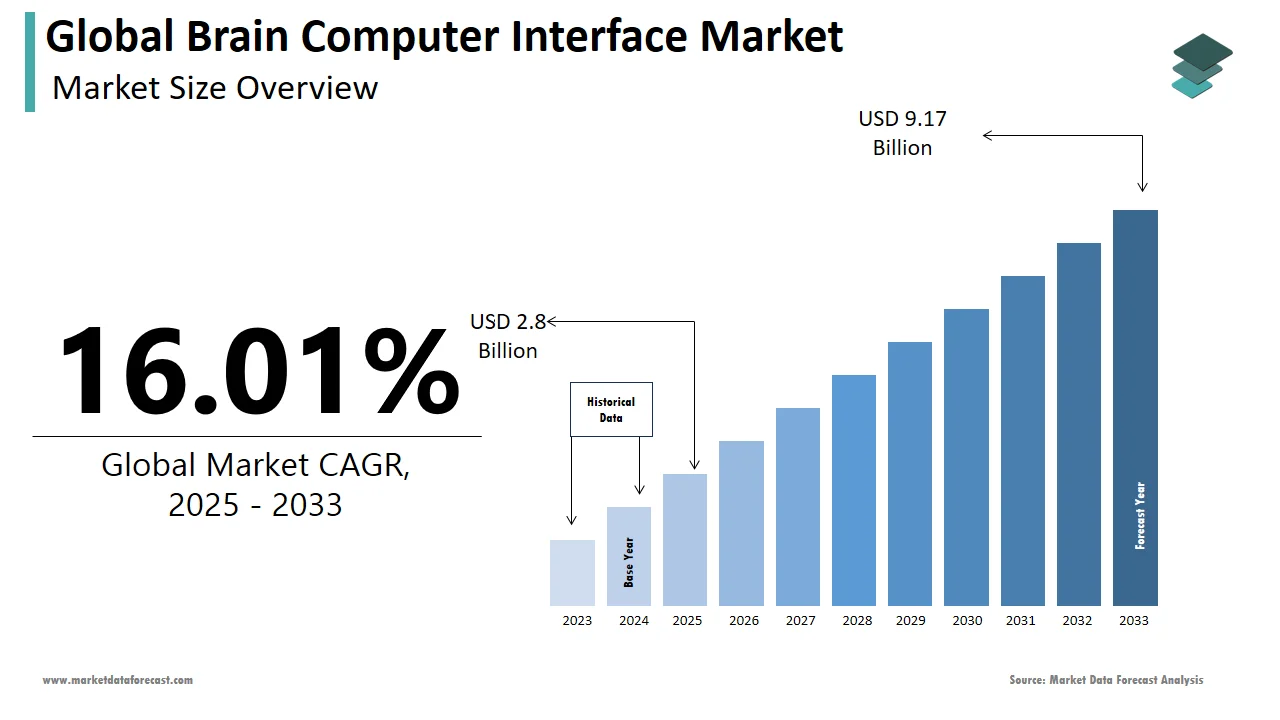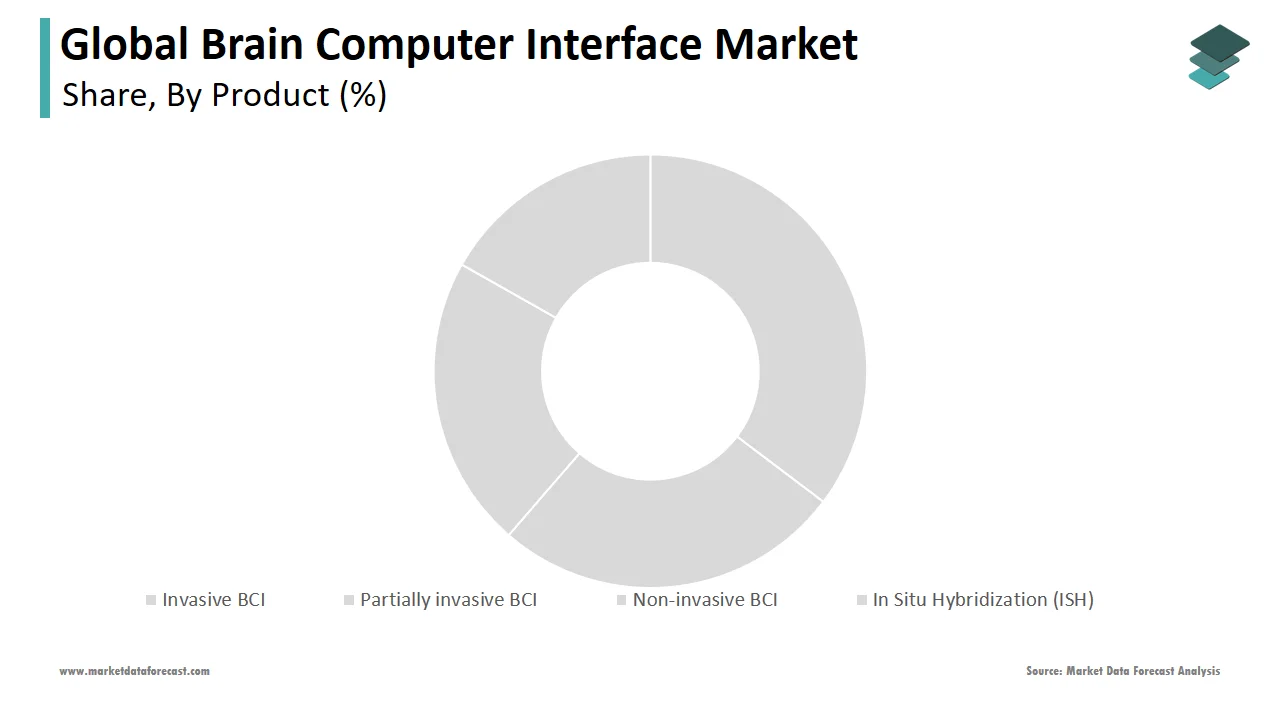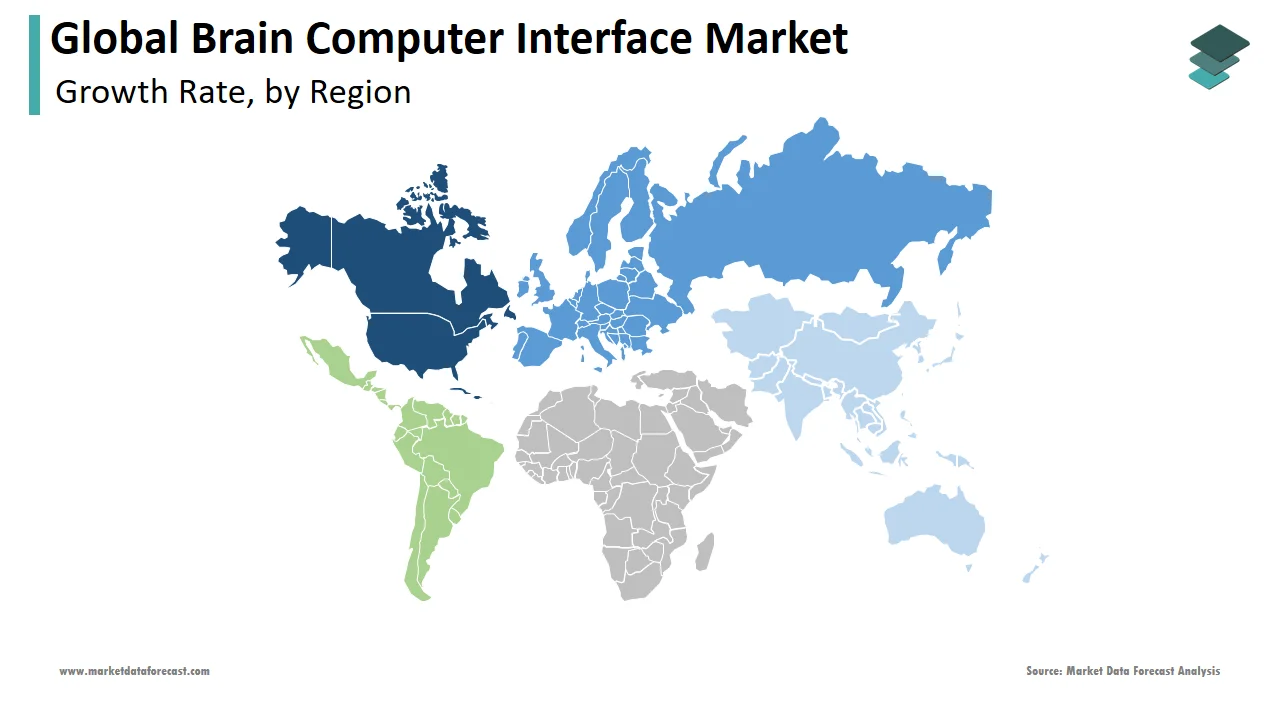Global Brain Computer Interface Market Size, Share, Trends & Growth Forecast Report By Product (Invasive BCI, Partially invasive BCI and Non-invasive BCI), Application (Healthcare, Smart Home Control, Communication and Control and Entertainment and Gaming), End Use (Medical, Military and Others) and Region (North America, Europe, Asia-Pacific, Latin America, Middle East and Africa), Industry Analysis From 2025 To 2033.
Global Brain-Computer Interface Market Size
The global brain-computer interface market was worth US$ 2.41 billion in 2024 and is anticipated to reach a valuation of US$ 9.17 billion by 2033 from US$ 2.8 billion in 2025, and it is predicted to register a CAGR of 16.01% during the forecast period 2025-2033.

A brain-computer interface (BCI) is an interactive platform or direct communication channel between the brain and an external device. In other words, a brain-computer interface (BCI) is a technology that allows a functional brain to communicate directly with peripheral electronic devices that are used to calibrate movement in disabled people. Brain-computer interface systems use neurophysiological signals generated by the human brain to control external devices such as smartphones and tablets. These signals must be carefully examined and then translated into commands to allow the required activities to be carried out. Because BCI systems cannot retrieve information from the brain alone, they must be combined with brain imaging technologies like EEG, fMRI, NIRS, MEG, and ECOG. According to a report issued by the World Health Organization (WHO), dementia illness will impact about 82 million individuals by 2030, and this number will rise to 152 million by 2050. According to these estimates, the need for a brain-computer interface (BCI) will almost certainly grow. Through signaling devices implanted within the brain or sensors placed over the scalp, a brain-computer interface system records the brain signal from the surface of the cortex.
MARKET DRIVERS
Y-O-Y growth in the prevalence of neurodegenerative disorders such as Alzheimer's and Parkinson's disease, and epilepsy are expected to drive the development of the global brain-computer interface market.
According to Parkinson’s Foundation's research, the number of individuals with Parkinson's disease is anticipated to increase to 1.2 million by 2030. This indicates an estimated 1.8 times rise in Parkinson's prevalence since 2010, emphasizing the need for improved care and treatment options for this patient population to reduce caregiver stress and relieve the economic burden. As a result, most of these patients will eventually require ongoing care, monitoring, or assistance, which can be made more accessible using brain-computer interface equipment.
Clinical studies, research institutions, and government organizations have increased their support for research efforts to enhance the usage of brain-computer interfaces through acquisitions, funding, and grants. The requirement for biocompatible materials would also increase the usage of brain-computer interfaces. Brain user interface systems are ideal for controlling smart home applications because of their great accuracy and reliability. Home control systems use P300-based technology, an event-related potential feature that aids decision-making, to execute different tasks like opening and shutting doors, turning on and off lights, managing the TV and music system, etc. The market for brain-computer interfaces is projected to grow due to the causes over the forecast period.
Combining BCI into virtual reality headsets, brain-computer interface technology is rapidly being utilized in both the smartphone and virtual gaming sectors (VR). In addition, digital gaming has opened up many opportunities for mind-controlled headsets and peripherals, accelerating the adoption of brain-computer interface technologies.
Several technological advancements in human-machine sensing and the growing usage of BCI technology in the healthcare sector are further fuelling the growth rate of the BCI market.
Overwhelming applications of BCI technology in entertainment and gaming and communication and control, the increasing geriatric population worldwide, and investments and funding by the government and private organizations are also anticipated to propel the BCI market. In addition, growing healthcare infrastructure in emerging nations like India is expected to open up many doors for BCI technology to expand globally. As the healthcare infrastructure develops, new solutions for enhancing people's lives with impairments receive increased attention.
MARKET RESTRAINTS
The shortage of qualified technicians to operate these sophisticated devices is a concern that restricts the global brain-computer interface market's growth. However, several constraints limit the worldwide brain-computer interface (BCI) market growth. The market's growth is expected to be hampered by BCI's low information transmission rate, lack of knowledge, and technological hurdles connected with integrating BCI technology with other devices.
Impact Of COVID-19 On The Global Brain-Computer Interface Market
The emergence of COVID-19 hurt the blood computer interface market during the pandemic lockdown period owing to the reduction in the supply chain and disruption of manufacturing facilities. Nevertheless, BCI is a potential tool for rehabilitation medicine because it can monitor brain activity and convert certain signal characteristics that represent the elderly's intent into instructions, improving their physical and cognitive abilities, which can be a promising tool for rehabilitation medicine COVID-19. The growing use of brain-computer interface (BCI) technology for the treatment of many older people with physical disabilities, on the other hand, will improve patients' quality of life.
REPORT COVERAGE
|
REPORT METRIC |
DETAILS |
|
Market Size Available |
2024 to 2033 |
|
Base Year |
2024 |
|
Forecast Period |
2025 to 2033 |
|
CAGR |
16.01% |
|
Segments Covered |
By Product, Application, End-Use, and Region. |
|
Various Analyses Covered |
Global, Regional, and country-level analysis; Segment-Level Analysis, DROC; PESTLE Analysis; Porter’s Five Forces Analysis, Competitive Landscape; Analyst Overview of Investment Opportunities |
|
Regions Covered |
North America, Europe, APAC, Latin America, Middle East & Africa |
|
Market Leaders Profiled |
Mind Solutions Inc., Neurosky, Inc., Cortech Solutions, Inc., Advanced Brain Monitoring, Inc., Emotiv, Inc., Nihon Kohden Corporation, and Guger Technologies OEG, Cadwell Laboratories Inc., OpenBCI, Quantum Applied Science and Research, Inc., and Others. |
SEGMENTAL ANALYSIS
By Product Insights

Based on the product, the non-invasive BCI segment is expected to dominate the global brain-computer interface market during the forecast period. The non-invasive brain-computer interface technology is the safest since the technique is less invasive, supporting the segment's growth. The segment is growing because of its wide applicability in devices, including headsets, gaming sticks, and amplifiers. In addition, several research initiatives are underway in this area. For example, in June 2019, Carnegie Mellon University and the University of Minnesota collaborated to construct the first mind-controlled robotic arm to track and follow a computer cursor utilizing BCI technology. Also, the invasive BCI is projected to grow over the forecast period significantly. Because of the BCI technology's capacity to provide the functionality to disabled persons via brain-controlled robotic legs and arms.
On the other hand, partially invasive BCI is most likely to witness rapid market share during the forecast period. The segment growth is driven by easy adaptability and technological advancements in the brain-computer interface. For example, Synchron Inc. studied Stentrode, a partially invasive neural brain-to-computer interface device that records brain activity wirelessly.
By Application Insights
Based on the application, the healthcare segment held the largest share and dominated the global brain-computer interface market in 2024 and is driven by the wide range of applications for brain-computer interface technology to treat sleep disorders and neurological conditions. Also, BCI technology is becoming more widely used in treating paralyzed people and neuroscience research.
In addition, the initiative taken by the major industry players and technological advancements in the healthcare sector is propelling the hospital segment. However, new product launches significantly impact the market growth, for instance. Medtronic launched a new clinician programmer for deep brain stimulation therapy with Activa neurostimulator. Furthermore, the National Institute on Aging awarded Advanced Brain Monitoring Inc. a grant in October 2018 to utilize brain activity biomarkers to prevent cognitive impairment linked with aging and dementia. Initiatives like this are paving the way for the widespread use of brain-computer interface devices in healthcare.
By End-Use Insights
Based on end-user, the medical segment is predicted to be the most lucrative segment among all and had accounted for the majority of the share in the global market in 2024. Patients with Parkinson's disease, epilepsy, paralysis, and Alzheimer's could use BCI to help them move around and do things like operating wheelchairs and prostheses independently. The segment is growing due to the important role that BCI technology plays in aiding impaired patients.
REGIONAL ANALYSIS

Geographically, the North American brain-computer interface market is forecasted to lead the global market during the forecast period. The regional market growth is driven by the increasing incidence of neurodegenerative conditions, including Huntington's disease and Alzheimer's. Major market participants such as the United States and Canada contribute to regional market growth. Over the forecast, the United States accounted for the largest market share due to technological advancement and increasing research and development activities on a brain-computer interface. Also, the Canadian brain-computer interface market is anticipated to contribute to the North American regional market growth.
The European brain-computer interface market mostly has a significant share in the global market during the forecast period. Rising demand for immersive gaming leads to the adoption of advanced technology augmenting brain-computer interfaces, boosting the market growth. The major contributors in the region are the UK, Germany, France, Spain, and Italy. The U.K. is projected to have a significant share in Europe. In addition, an increase in the prevalence of neurodegenerative illnesses such as Alzheimer's and Parkinson's disease, and epilepsy is predicted to fuel demand for brain-computer interfaces.
The Asia Pacific brain-computer interface market is the fastest-growing region in the global market from 2025 to 2033. Also, the market is expected to grow significantly during the forecast period. The emerging countries are increasing at a significant pace. China is witnessing technological advancements, resulting in better options for healthcare professionals in the country. Chinese researchers built a neural signal analysis system with memristor arrays in 2020, opening the way for high-efficiency brain-machine interfaces, and utilized the system to filter and identify epilepsy-related neural signals, attaining a 93 percent accuracy. Researchers in the domains of electronics and medical research contributed to the development of the system. Further, the Indian brain-computer interface market is anticipated to register better growth during the forecast period. Initiatives and increasing investments by the government in research activities are likely to drive the market.
KEY MARKET PLAYERS
The major r players in the global brain-computer interface market are Mind Solutions Inc., Neurosky, Inc., Cortech Solutions, Inc., Advanced Brain Monitoring, Inc., Emotiv, Inc., Nihon Kohden Corporation, and Guger Technologies OEG, Cadwell Laboratories Inc., OpenBCI, Quantum Applied Science and Research, Inc.
MARKET SEGMENTATION
This market research report on the global brain-computer interface market has been segmented and sub-segmented based on product, application, end-use, and region.
By Product
- Invasive BCI
- Partially invasive BCI
- Non-invasive BCI
By Application
- Healthcare
- Disabilities Restoration
- Brain Function Repair
- Smart Home Control
- Communication and Control
- Entertainment and Gaming
By End-Use
- Medical
- Military
- Others
By Region
- North America
- Europe
- Asia-Pacific
- Latin America
- The Middle East and Africa
Related Reports
Access the study in MULTIPLE FORMATS
Purchase options starting from
$ 2500
Didn’t find what you’re looking for?
TALK TO OUR ANALYST TEAM
Need something within your budget?
NO WORRIES! WE GOT YOU COVERED!
Call us on: +1 888 702 9696 (U.S Toll Free)
Write to us: sales@marketdataforecast.com
